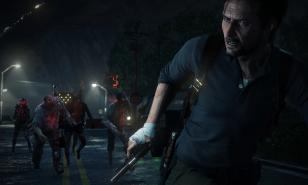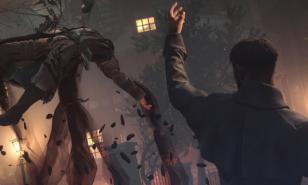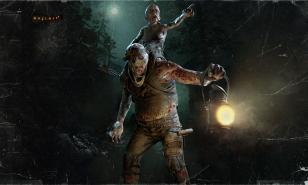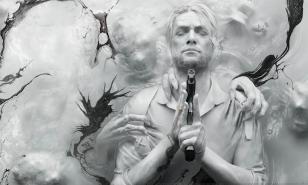Is The Evil Within 2 Good?
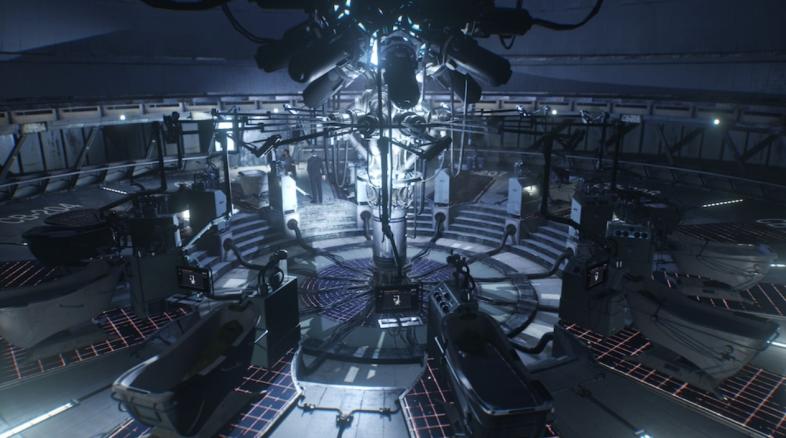
The "unexpected" sequel
The sequel to The Evil Within came as a surprise, despite the fact that its story had been hinted at in the first game. In one of the DLC (downloadable content) for the first game, there is a blonde woman overseeing more tests in STEM- the machine that runs the virtual world that Sebastian had first explored.
It is here that we get our overall arcing story for The Evil Within 2 and are faced with the same shock that Sebastian is: his daughter is alive.
Having spent the previous game learning of the protagonist's loss and his coping mechanisms after, it comes as quite the surprise to learn his daughter is actually alive and well. And we learn all this in the first few minutes of the opening of the game.
The question remains though. Does the story make sense, is there ample horror and tension, is it actually... a good game?
Well, let's see if we can answer that together as we examine different aspects of the game.
Our protagonist is thrown back into the virtual world
Having survived STEM and the virtual world once before, it's no surprise that our protagonist would be wary to enter it once again. However, much as a good father would, Sebastian jumps in without remorse in order to save his daughter.
While this could feel like a retcon of the original story that was introduced in the first game, it actually isn't. As stated, The Evil Within 2's story was hinted at in the first game's DLC. So really, it is more like we are learning a new piece of the puzzle and the player is now getting the full story.
Nothing is ever as simple as it seems, though. Once again our protagonist is thrust back into the virtual world to fight for his life. There are plenty of wandering enemies, along with more formidable creatures to contend with.
This time sees the player and Sebastian thrown into Union; a city modeled after "anywhere USA". We'll discuss the town and its exploration in more detail later, but for now it's nice to know where this story takes place.
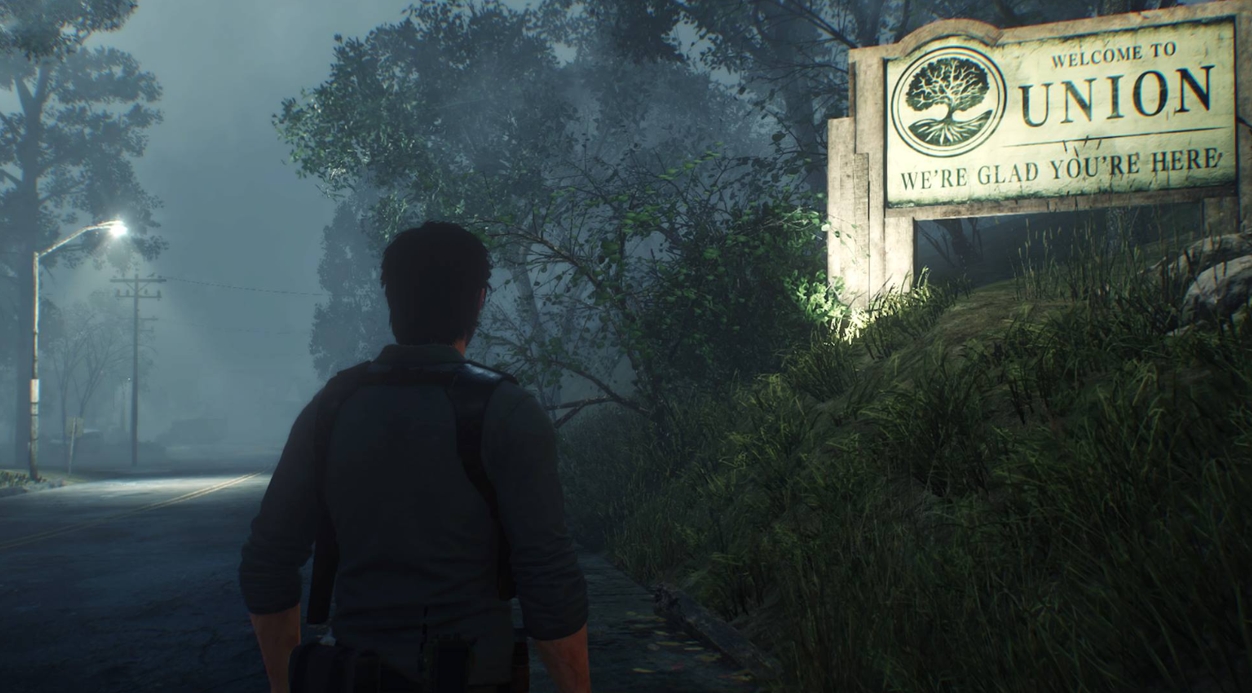
Sebastian Castellanos enters the virtual city named Union
The deuteragonist is more involved this time
The secondary protagonist, Juli Kidman, has a more visible role in this game. In the original game, Juli Kidman appeared only a few times in the main story. Players discovered her side of the main story through the DLC.
This time she guides Sebastian on his route through Union, giving tips and information where she can. Her dialogue proves both helpful and interesting in furthering the story. It also gives the player a deeper knowledge of certain characters that appear.
Overall, it is refreshing to see her have a more direct involvement in a main game instead of having to discover her actions through DLC.
The tidbits with Juli also help put into perspective just how devious MOBIUS is. MOBIUS, the evil corporation responsible for all the problems throughout the first and second game. They funded both STEM (virtual world) projects and Juli's dealings with them offer insight to their machinations.
The first major boss leaves the biggest impression
While each major boss has its own unique theme, the one that stands out by far is the first one encountered: the crazed photographer, Stefano Valentini.
The player is thrust into Stefano's world from the moment they step foot in the new STEM system. In fact, the first creature encountered is one of Stefano's creations named The Guardian. It provides a chase scene that gets the heart pumping.
All of Stefano's creations, his self-proclaimed 'art', bend the mind and make the player stare. A feat that makes the other creations from the other bosses seem lackluster. There are exceptions, of course, but even the other environments seem to have less pizazz than Stefano's did.
The second major boss is a journey in itself, to be sure, but it seems to drag on comparatively. While the focus is guilt and self-inflicted emotions, it begins to feel repetitive and stale after a while. It leaves the player willing the game to continue on past this point and this second major boss.
That sensation does not seem to be present during the set with Stefano Valentini. If anything, the player may be eager to encounter the villain just to best him, considering everything he does in the game.
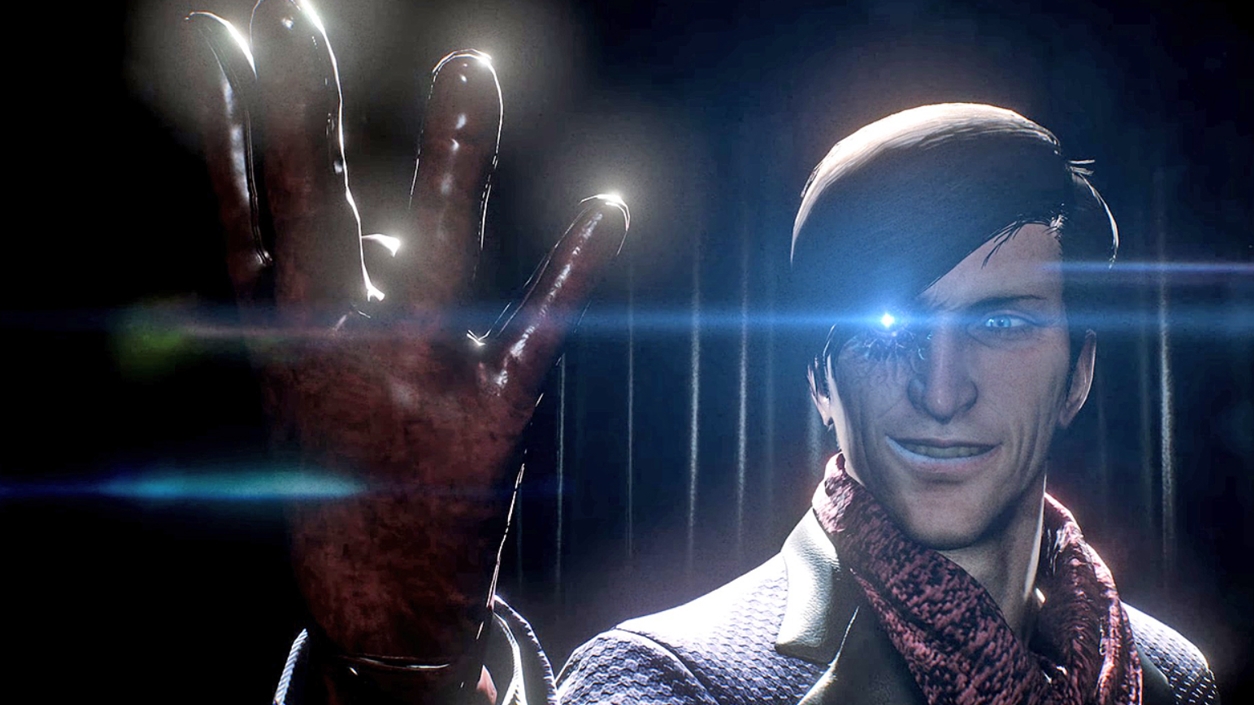 Stefano Valentini displays his abilities
Stefano Valentini displays his abilities
The antagonists' monsters provide plenty of tension
That being said about the bosses, their creatures do offer much needed tension in the game. While the remaining crowds after Stefano's section may seem less impressive, they still give a strong sense that the player must avoid them.
This urgency is only magnified by the fact that most things can kill the protagonist in one to three hits.
There is even a section of the game that, while exploring Union, the player must be cautious and avoid The Guardian the entire time. The Guardian can spawn from the piles of bodies that other creatures have gathered. There is no real 'escaping' The Guardian since the creature can just spawn again in a new area.
This leaves the player with a sense of anxiety while exploring. Especially since the player may hear the thud of The Guardian's steps or her maniacal laughter at any point. And this is just one of the many creatures encountered in-game.
There are plenty of others that get the heart racing, or make the player squirm in discomfort.
A flip between 1st and 3rd person keeps the game fresh
Possibly one of the most surprising aspects of the game is when it suddenly switches to first person mode. This added a whole new layer of tension, since the player could no longer use the camera to spy safely around corners.
It also puts every encounter right in the player's face. There is no sense of separation because everything happens directly to the screen and the player's field of view.
As an update after its release, the game made it available as an option in the menu. Players could change the perspective of the game between first and third person view. This meant the entire game could be played in either perspective.
And playing the whole game in first person mode is an entirely new experience, not to mention challenging.
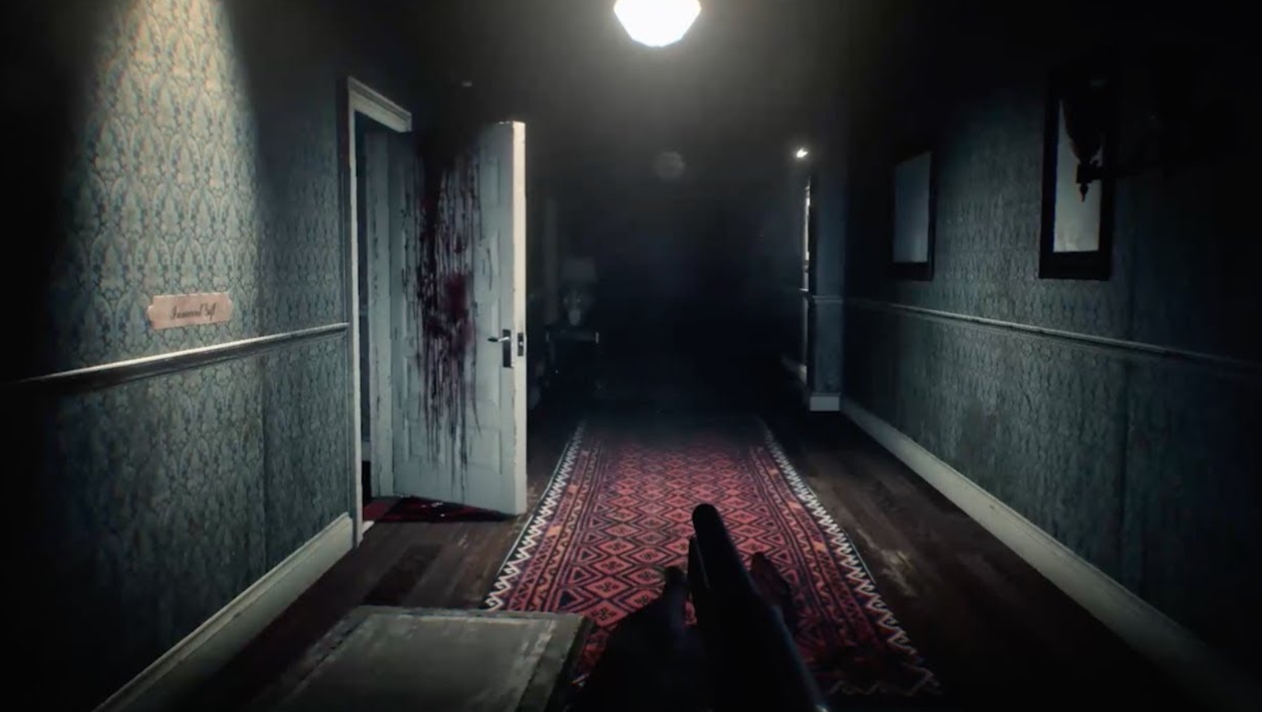 First person view of the game
First person view of the game
Combat and gameplay seem much smoother comparatively
One of the nicer things about the sequel is how much smoother it seems to run. The player will find that controls are not as clunky and even aiming the weapons is less jittery.
Compared to the first game, Sebastian seems to have remembered his years of training with weapons. The aiming reticle feels like it slides across the screen. There are still a few moments of clunkiness, though.
But that's to be expected since the game offers upgrades for the weapons and weapon handling.
Even Sebastian's regular movement seems to be smoother than it was in the original game. There is an instant connection between pressing a button on the keyboard or moving the controller and having the protagonist veer left or right, accordingly.
This is a much welcomed change from the first game where all controls just felt clunky and disjointed until enough upgrades had been made.
There is more to explore in the sequel
The original game did offer a sense of exploration but was overall pretty linear. The Evil Within 2 offers that same linear feeling but only when it comes to the main story. Otherwise it offers options of exploration to the player.
When in Union, it's an entire town to explore. Granted, you can only explore chunks of it at a time but it still offers more exploration than the first game did.
The game also encourages exploration with its many choices of side quests. For example, Sebastian can track down rogue MOBIUS agents and watch echoes of their actions and dialogues. This offers more depth to the world and even more insight to certain characters.
Furthermore, the protagonist is tasked with finding missing MOBIUS agents (not the rogue ones) upon entering the virtual world. These characters not only further the story but also give the player even more chance for exploration.
Encountering a few of these agents allows for more dialogue and insight into both the company that is MOBIUS and the virtual world itself. It also has the possibility to open more side quests.
So, overall, it's worth exploring the world whether it be to gain more weapons, meet new people, or gather more side quests.
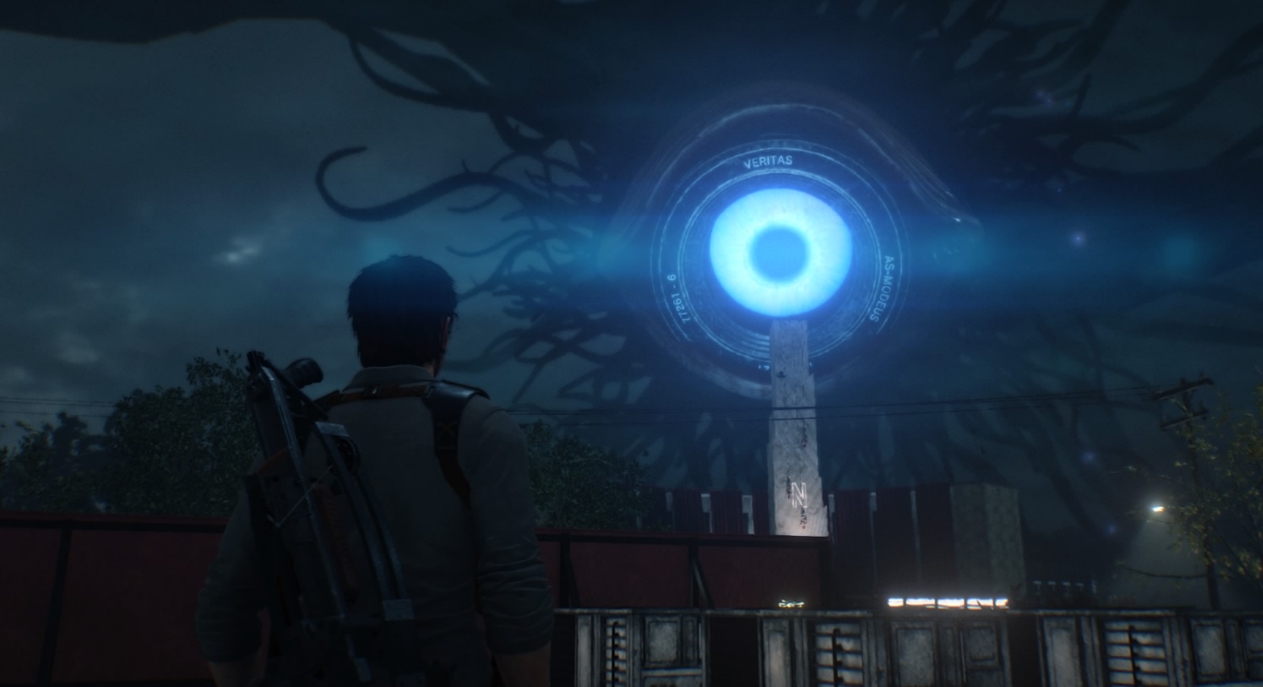 Aperture, Stefano's creature, looks down upon Sebastian and Union
Aperture, Stefano's creature, looks down upon Sebastian and Union
Item management is still a necessity
One thing that hasn't changed is the need to manage items carefully. The player can find ammo and items lying around in trash cans, boxes, and even on a few agents' corpses. But overall, most enemies drop Green Gel (an upgrade material) much as they did in the first game.
All too soon the player will find themselves in a firefight with far too little ammo if they don't manage their resources accordingly. And this theme is carried over from the first game.
True to its survival horror roots, The Evil within 2 continues to make the player choose between fighting, running, and hiding. And each choice has its own merits depending on the situation.
There will be times that the player must utilize all three choices in turn. And few things are worse than realizing fighting is the only option when the player only has a few bullets to their name. Therefore item management is a necessity.
Conclusion
The sequel seems to be much improved over the last game when it comes to controls. Even the story is presented with more clarity. While the player can find notes and files that further deepen the story and give information on characters, the general story is delivered clearly and concisely.
Horror, gore, and tension are still key elements to The Evil Within series. This is made clear via the creature designs and overall themes developed within the world. There’s always a puddle or smear of blood only a step away from our protagonist on his journey.
This coupled with the amount of side quests available give the game more substance. And more substance means more game to explore/play. Replay value is something the game does offer considering how much there is to find; along with the fact that upgrades carry over with each playthrough.
After all considerations, I would have to say The Evil Within 2 is indeed a good game. Creative, unique, and true to the survival horror genre.
Overall Fun Factor: 8 / 10
- Log in or register to post comments
 Home
Home PC Game Trailers
PC Game Trailers News
News Menu
Menu


